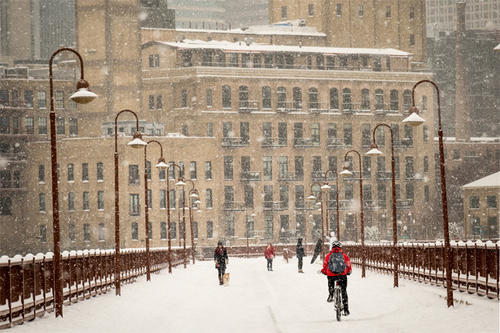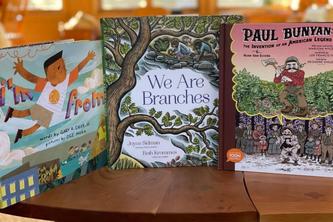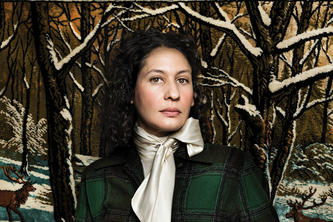
Every year, Minnesota’s severe winter weather conditions—blizzards, extreme cold, ice storms—grip media attention and public consciousness. Yet how everyday winter weather shapes health and well-being is often overlooked. The impact of weather on older adults who are potentially more vulnerable to climactic conditions requires much more attention.
A paper titled “‘Walk like a penguin’: Older Minnesotans' experiences of (non)therapeutic white space” published in the February 2018 edition of Social Science & Medicine explores just this: older adults’ experiences and perceptions of harsh winter weather conditions in urban and suburban areas. Jessica Finlay, interdisciplinary doctoral fellow in the Department of Geography, Environment, and Society and the Center on Aging at the University of Minnesota, conducted research with 125 older adults (aged 55–91) from the Minneapolis metropolitan area.
“I did not plan to study winter,” said Finlay. “In fact, I conducted my interviews in summer and fall without any snow or ice on the ground. Yet more than 83 percent of participants brought up their interactions with snow and ice at least once during their interviews. It was a passionate topic of conversation!”
Finlay found that white spaces – environmental snow and ice – could both promote and diminish health and safety in older participants. Participants mentioned common dangers of winter conditions including falls, mobility restrictions, worry, fear, boredom and social isolation.
But Finlay was caught by surprise by the widespread positive comments about winter weather conditions. “Many participants were proud at their ability to survive, and even thrive, during Minnesota’s tough winters. It formed a part of their self-worth and identities,” said Finlay. “One woman, for example, proudly told me that she ‘walks like a penguin’ by using her cane for balance and taking small shuffling steps in winter.” Participants enjoyed crisp white snow (especially when comfortably viewed through a window), winter leisure activities and bonding with neighbors and family over shared experiences such as shoveling driveways and sidewalks.
According to Finlay, deeper knowledge of both positive and negative impacts of winter weather can be mobilized in community programs and urban planning. Communities can invest in supportive design of outdoor built and natural environments to minimize harms and maximize positive aspects. Participants identified the need for well-maintained sidewalks, roads and parking lots with regular snow and ice removal and affordable plowing services for low-income residents. Municipalities can consider alternative designs for curb cuts and pedestrian intersections to facilitate safer mobility in winter.
In her paper, Finlay encourages policymakers and community organizations to get creative. “Neighborhood shoveling programs could aid those in-need and boost socialization. Community service organizations could facilitate seasonal activities such as transportation to events, indoor walking clubs, fall prevention classes and check-in systems for more-isolated older adults. Outdoor winter recreation groups, winter landscape photography classes, storytelling groups and other basic programs could enrich enjoyment of, leisure in and shared social connection with winter conditions.”
Funding for this work was provided by the National Science Foundation (DDRI Grant No. 1558577), the University of Minnesota Interdisciplinary Doctoral Fellowship and Doctoral Dissertation Fellowship, the Alfred Bader Fellowship, the Philanthropic Educational Organization Scholar Award and the University of Minnesota Department of Geography, Environment, & Society Alumni, Faculty and Friends Graduate Fellowship.
About UMN Research Briefs
The University of Minnesota is home to more than 4,000 researchers who tackle some of the world’s biggest challenges, including securing a sustainable global food supply, advancing robotic technology, purifying waters affected by mining and runoff, finding new treatments for brain diseases and more. These researchers continuously publish new research papers on a range of subjects. UMN Research Briefs are a summary of their most recent published work.
- Categories:
- Arts and Humanities





